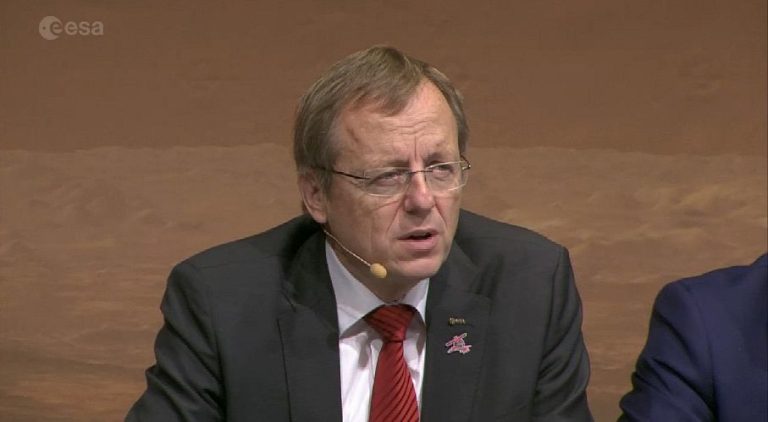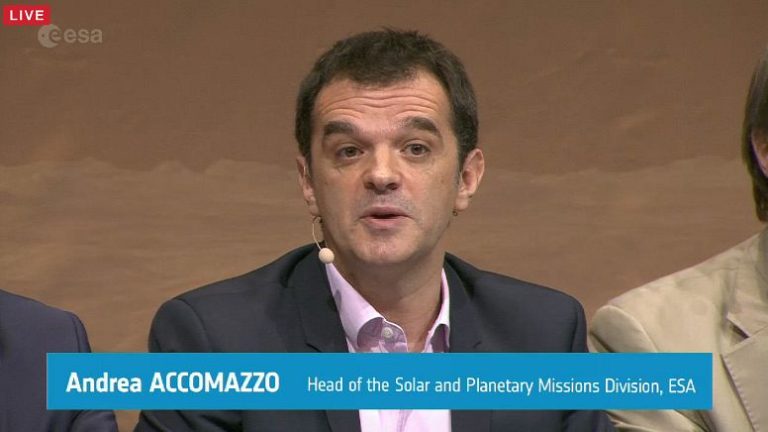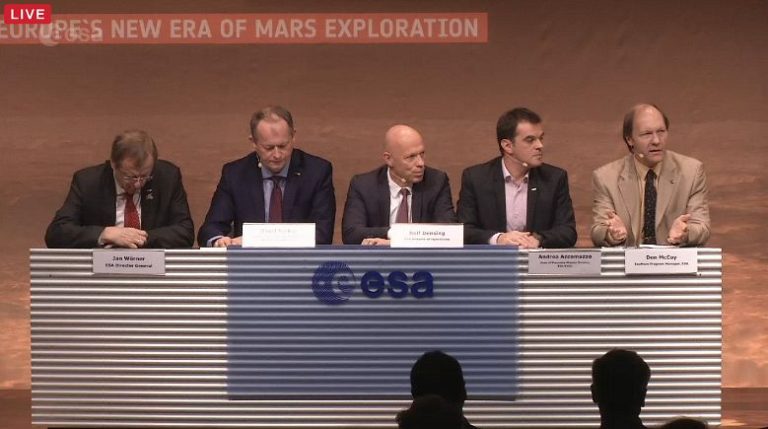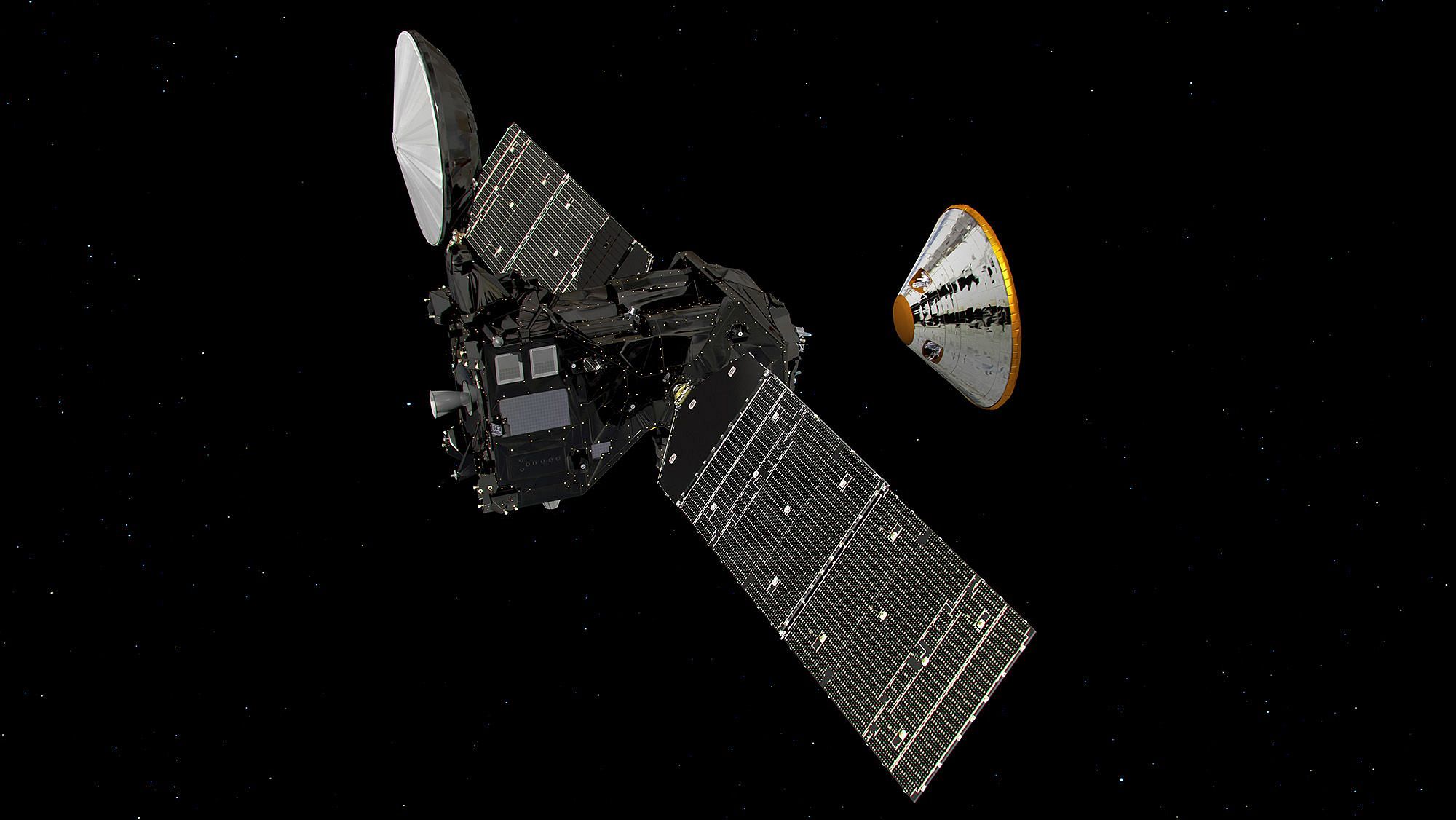The ExoMars landing demonstrator has probably crashed. Nonetheless, ESA regards the mission as a ‘big success.’
Dr. Daphne Stam, associate professor in astrodynamics and space missions (Faculty LR), felt sad over the mission.
“After the landing, there has been no signal from the lander, so it has probably crashed”, she said. The thin atmosphere may have made it difficult to reduce enough speed, she said. Analysis of the mission data should clarify what has gone wrong during the descent.

At the press conference at ESOC in Darmstadt, Germany, ESA Director General Jan Wörner highlighted the good news. The Trace Gas Orbiter had successfully been inserted into an orbit around Mars. It had relayed data from the Schiaparelli lander and was now in place for the next mission in 2020. The lander had successfully transmitted data during the descent, except for the last few seconds.

ESA Head of Solar and Planetary Missions Dr. Andrea Accomazzo, on an equally positive tone, confirmed that test data of the demonstration lander had been received. These data showed that the first part of the descent, through the upper atmosphere, had gone according to plan. The heatshield had worked and was jettisoned at the right time. Deceleration, parachute and heat shield deployment had all been confirmed. The data from the period after the parachute deployment deviated from the earlier projections said Accomazzo. No details were given here.

How likely is it that Schiaparelli has crash-landed, asked a BBC correspondent. “A soft landing has not been confirmed”, was all the panel was prepared to acknowledge.
Will the crash jeopardise the 2020 mission, another reporter asked. The 2020 mission stands for putting the ExoMars rover on the surface of the Red Planet. Wörner repeated that ESA regards the mission as a great success. He assumed that the 300 million additional funding for the ExoMars 2020 mission, shortly up for voting, would not be endangered.
Emeritus Professor Boudewijn Ambrosius puts the (assumed) crash in perspective. The public tends to focus on the crashed lander. But for ESA, the mission was primarily about putting the TGO in orbit around Mars, he explained. It was meant as a first step, later to be followed by the landing of the ExoMars rover, for which the TGO forms the relay to Earth. The Schiaparelli lander was an add-on for measurements during a landing. “The mission has succeeded for 80%”, said Ambrosius. “Data will show what technical detail has gone wrong so that they can do that differently when they land the rover. Eventually, man will walk on Mars, I’m sure.”
Dr. Stam saw one positive consequence from the assumed crash. Dr. Francesca Esposito from the University of Naples had to postpone her lectures in Delft because of the instrument Dreams she had on the lander. It was to analyse quantities and sizes of dust in the Martian atmosphere. Now that unfortunately there is no signal from the lander, Esposito may decide to come to Delft earlier than planned.



Comments are closed.